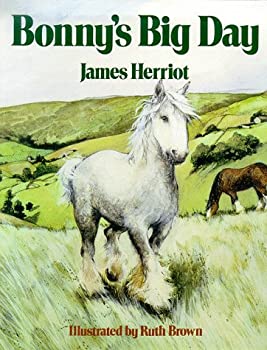Interesting how language varies. The Gypsy horses are “coloured” and have “patches” in the UK because we consider “spotted” horses to be those with little round dots, like an leopard spot appaloosa. In the 17th century “branded greys” were greys with dots like finger prints from handling charcoal, which I think is rather charming. However, 1930s Yorkshire would have only had coloured gypsy horses and they were waaaay down the social hierarchy.
I was going to say “coloured”, but I figured the largely US audience of COTH would not understand.
I have a big upright nicely put together chestnut Overo Paint mare. One day a woman (white, not the brightest bulb) asked me about her and then said “oh, I thought she was a warmblood of color.”
I thought that was one of those moments when words for people and animals get blurred. Like when FB cracks down on horse chat groups when people say things like “all Arabs are kind of crazy.”
Thanks to this thread, my children and I just started watching this series. Charming and fun to watch. I love programmes that are like love letters to the settings in which they are filmed: Y Gwyll, Poldark, and this series I can watch just for the landscape shots.
Nations in Europe, even Britian, actually liked the various smaller spotted horses, with old (1600-1700s ) portraits of riders on Appaloosa colored equines in Spain. Little spots, not the patches of pinto coloring. Knabstrubbers were very attractive, established as a breed in Denmark in the early 1800s. The British Spotted Pony and Austrian Noriker also carry the Appaloosa type spotting. All are descended from ancient, prehistoric European spotted horses pictured in cave paintings. The Spanish also had Barb breeding to use from the hundreds of years the Moslems occupied the country. Barbs came in colors too back then. President Ulysses Grant’s two gift Barb stallions from Turkey introduced Appy spots to their decendents, who were later registered as Colorado Ranger/Rangerbred horses.
I do not think the Spanish brought over their “castoffs, junk horses” to the new world. They brought the good horses they liked, comfortable gaited, good minded, tough, colored animals, to explore this territory with. They planned to live out their lives here, wanted good stock to use. Color in patches or the small spots was a bonus!
I think what I read was that the baroque loved fancy colors but the 18th century went classical and wanted solid colors, so the spotted horses went to America. Something certainly happened because the color gene pool in mustangs and American breeds is amazing compared to anywhere else. All the creme and dun dilutes, roans, Appaloosas, all the pinto patterns, and then quite rare things like silver dapple (chocolate palomino) in the Rocky Mountain horse. It’s also possible that there’s a survival camouflage benefit for creme and dun dilute horses in the desert and for Appaloosas and pintos in the snow. I once looked up at my horse in the hog fuel turnout at dusk in winter and she had disappeared into the patches of half melted snow.
Queen Victoria strikes again. Sober, dark, but rich fabrics got fashionable. Same with many other things during her reign. Bright trim was allowed on carriages, but much in dark paint, suits, dark horses. The Europeans did not sink so deeply into the dark colors as UK and copycat Americans did.
Friesians have been around much longer than that. I got mine in 1993 and showed her in dressage.
I remember everyone swooning over the horse in “Ladyhawke” back in the mid '80s
Yep, feeding their brothers along the fenceline.
If you would like to see some of the real settings from the book series, there’s an older photo book called James Herriott’s Yorkshire (Amazon has it) that has Herriott’s commentary about the locations included.
Yep, that’s what made me get mine!
Or, if you’re looking for good books to read with kids (that you might enjoy as well), James Herriot’s books are great fun.
I remember we had Bonny’s Big Day in the children’s section in the library where I worked.
She was definitely not a Friesian! lol

Bonnie looks like a Shire to me. They are greys and blacks, bell shaped leg feathers. Haven’t read the book.
She looks like a Shire to me too. I haven’t read the book since the year it was published. 1987?
I haven’t watched the new version of the series, but could they have been Fell ponies? They look like small Friesans and would have been available in England. Queen Elizabeth breeds and rides them.
These were full-size horses, not ponies.
@goodhors @Rackonteur
Bonnie was a Shire. The short story is actually an excerpt from Herriot’s original writings, which were from the 1930’s and 1940’s. In several places in his books he mentions the loss of thousands of Shires, Clydes, and Suffolks as the tractor took over, WWII encouraged mechanization, and over night the British draft horses came to within a few hundred head of complete extinction.
That book also made me fall in love with Shires!
B and b, too true. They are now all on the rare to endangered breeds, along with the Cleveland Bays. Not enough jobs for them anymore.
